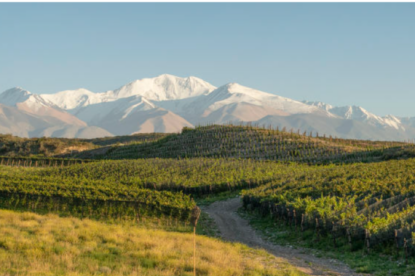Perhaps nowhere on earth is wine more deeply intertwined with a culture and society than in France. From Grand Cru bottlings right down to Vins de France, there is a French wine for every budget and taste bud.

Much of France’s staggering diversity has been driven by vins de vignerons (or vigneronnes), wines crafted by grower-winemakers, who, through sensitive farming and traditional winemaking techniques champion the indigenous grape varieties and wine styles of their region. These varieties and styles—and even the regions themselves—are often lesser known, yet they yield some of France’s most characterful and affordable wines: vins de vignerons that beautifully express their terroirs.
“Vignerons not only grow the grapes, they also make the wines, and because they know the synergy, the quality of the vintage, the behavior of the vines, they are able to make wines that express their place with the personality of each year,” says Pascaline Lepeltier MOF, Managing Partner at New York restaurant Racines NY. “In France, vignerons and vigneronnes are part of our wine history, and today they carry French evolution towards more sustainability, especially organic and biodynamic farming.”
At the foothills of the Vosges Mountains on France’s northeastern border in Alsace, world-class Riesling, Gewurztraminer, Pinot Gris, Sylvaner, Muscat and Pinot Noir can be playful yet austere; textural yet crackling with acidity; precise and poised yet wild and experimental.

Further south, few places on earth boast more uniquely crafted wines than in Jura. From vin jaune, which develops under a layer of flor, or yeast strain, to red varieties like Poulsard and Trousseau and more well known grapes like Chardonnay and Pinot Noir, Jura wines dance entirely to their own beat.
The cool climate wines of the Loire Valley in northwest France walk a tightrope between complexity and drinkability, and often for super affordable prices. There’s citrusy, mineral-laden Muscadet, versatile Chenin Blanc, spicy Cabernet Franc, floral Gamay and over-delivering native varieties like Pineau d’Aunis and Grolleau. Appellations like Menetou-Salon, Quincy or Reuilly provide excellent Sauvignon Blanc alternatives to Sancerre and Pouilly-Fumé.

For wines with more structure and body made from both well known varieties like Malbec to lesser known ones like Mauzac, France’s rugged southwest offers exceptional value in regions like Bergerac, Marcillac, Cahors, Fronton, Madiran, Gaillac, Irouléguy and Jurançon.
Even in France’s most famous regions, diversity, drinkability and affordability abound.
Burgundy has set the global benchmark for Chardonnay and Pinot Noir. But the lesser known Aligoté, when carefully farmed, can be sublime, shimmering, nervy and delicate.
Champagne is the most famous sparkling wine on the planet but Crémant is made in the same traditional method and can be found all across France.

In Bordeaux, world renowned first growth Cabernet, Merlot blends may be exceptionally long lived, but stately wines of similar ilk and often earlier drinking can be found in appellations like the Côtes de Bourg, Côtes de Blaye and Côtes de Franc, to name a few.
If the purity and heady aromatics of Grenache, Syrah and Mourvedre (to name a few) are more your speed, look to the historic Rhone Valley for appellations near Châteauneuf-du-Pape like Rasteau and Vacqueyras, or for more every day drinking, the Côtes du Rhône.
Follow the Rhone River to the Mediterranean coastal region of Provence, the oldest wine region in France, where sunset-hued Rosé rules, made from varieties like Cinsault and Mourvèdre. A vast array of bargains can be found in the diverse Côtes de Provence as well as artisanal red and white wines from appellations like Les Baux de Provence.

Next door, the Languedoc-Roussillon is a geological treasure trove where ancient vines are farmed, sometimes by horse, from a myriad Mediterranean varieties, made in styles ranging from light and fruity to structured and terroir-driven.
France’s vast array of wine styles means no two wines are alike. One thing they have in common? They are exceptionally food friendly. The saying “what grows together goes together” could be wholeheartedly applied across French wine, which pair well with local produce, cheeses, meats and seafood.
“French wines are quite suited for pairing because they have been historically on the table!” says Lepeltier. “…but today, more than ever, the world is our playground to create new, delicious pairings with the exquisite foods and dishes from any country on this planet.”
Whether it be Champagne or Crémant with fish tacos; Côtes de Provence rosé with California style pizza; Alsatian Gewurtztraminer with spicy Thai beef satay; Jura’s vin jaune with a pastrami sandwich; Malbec from Cahors with a hamburger; a peppery northern Rhone Syrah with Korean barbecue; Loire Chenin Blanc with a traditional American brunch; or a luscious dessert wine from Bordeaux’s Sauternes or Sainte-Croix-du-Mont with cheesecake, there is a French wine to pair with every kind of cuisine.
When it comes to French wine, the choices are seemingly endless.
< Back to A French Wine for Every Table
Last Updated: May 8, 2023













